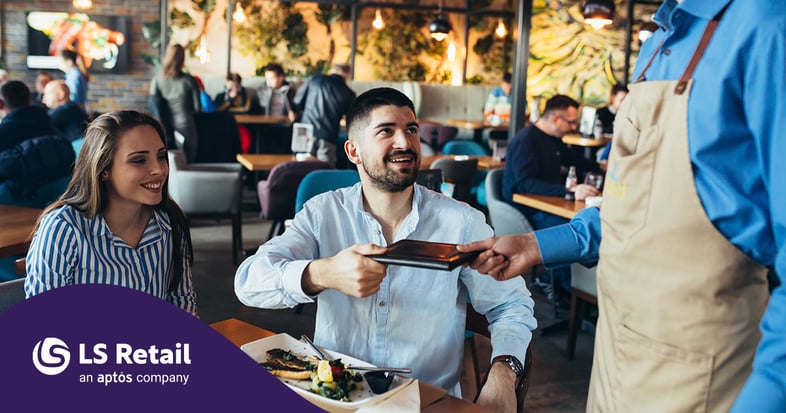4 effective strategies to maximize table turnover in your restaurant

Ever walked into a bustling restaurant and everything just flows? The host greets you warmly, shows you to your table right on time, and hands you a tablet to browse the menu and place your order when you’re ready. Behind the scenes, you notice the kitchen and front of house all running smoothly – orders are coming out fast; the atmosphere is lively but not chaotic. It’s clear that this restaurant knows how to keep things moving, making sure every customer is taken care of without feeling rushed.
This is what it looks like when a restaurant successfully maximizes table turnover and creates a dining experience that’s fast and satisfying for every guest.
Here are four practical ways to help your restaurant operate more smoothly, deliver great service, and get the most from every paying customer.
1. Let guests order quickly
Nobody likes waiting ages and trying to flag down a busy server just to place an order. Make life easier for your guests (and staff) by giving them the option to order as soon as they’re ready with self-service kiosks, tableside tablets, QR codes, or a mobile app.
With self-ordering solutions, guests can browse menus, check allergen information, customize their meals and send their orders directly to the kitchen. Doing it themselves avoids miscommunication errors and lessens the reliance on waiters, especially during peak hours. If someone wants spaghetti without tomato sauce, they can make that change easily. These options should also support multiple languages and suggest add-ons, increasing the chances of additional sales. Plus, with integrated digital payments, guests can settle their bill quickly and free up the table for the next diners.
2. Lower wait times for tables
A packed restaurant doesn’t have to mean long wait times for a table. Restaurants that rely on a comprehensive table management system are able to make the most of their space and get guests seated faster by tracking table availability in real time.
Comprehensive restaurant management systems that offer table management tools can help your staff easily see which tables are available, check reservations, and even adjust layouts on the fly. Have a walk-in group that needs more space? Just drag and drop tables to accommodate them. These solutions, like LS Central for restaurants, connect directly with the POS, allowing staff to see exactly which tables have ordered and which are ready to pay, making it easy to keep things moving without making guests feel rushed.
3. Speed up kitchen preparation
A well-orchestrated kitchen helps speed up service — and faster service means faster table turnover. With a kitchen display system (KDS), orders flow instantly from the POS to the correct prep stations, eliminating paper tickets and minimizing delays or mistakes. Special requests, allergies, and last-minute changes are automatically flagged, so meals are prepared correctly the first time, reducing the need for re-dos and hold-ups.
Meanwhile, servers can check order statuses directly from the POS without having to run to the kitchen, allowing them to pace table service efficiently and stay available to turn tables when meals wrap up.
4. Use data analytics to plan ahead
Ever wish you could predict your busiest times and plan accordingly? With the right data insights, you can.
With analytics tools that track metrics like revenue per available seat hour (REVPASH), peak dining times, and kitchen order ticket (KOT) service times, you can identify exactly when your restaurant is busiest — and plan accordingly. This means smarter scheduling, a well-prepped kitchen, and the right menu mix to keep service moving at pace during peak periods. If Thursdays and Fridays at lunch are consistently packed, or a certain dish slows down the kitchen, you'll know, and can act.
You can also use these insights to keep table turnover steady during slower times. Personalized offers, like discounts on a guest’s favorite dish or time-limited promos, can help fill seats during off-peak hours.
The power of a connected dining experience
Maximizing table turnover shouldn’t mean rushing guests out the door. Take a step back and consider your current setup: are your processes helping or holding you back? When all your systems, teams and processes work together seamlessly, you can serve more guests, boost revenue, and deliver a memorable dining experience that keeps customers returning time and time again.
Want to improve service and turn tables faster? Contact our experts to find out how our software solutions for hospitality businesses can help you drive results.

